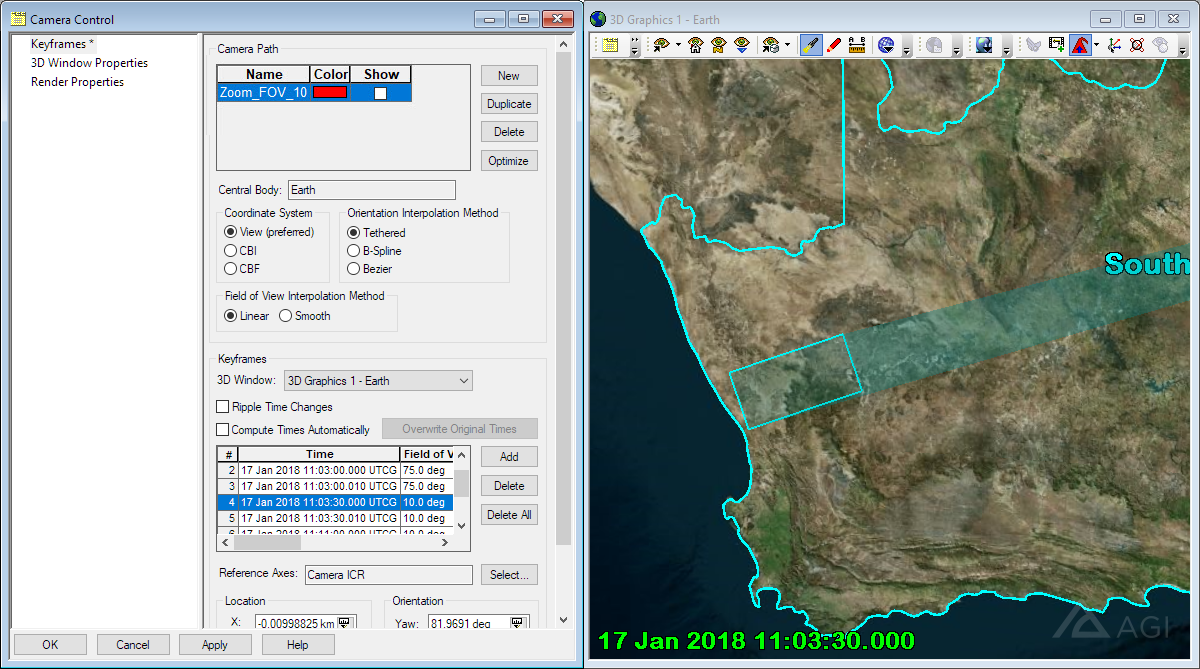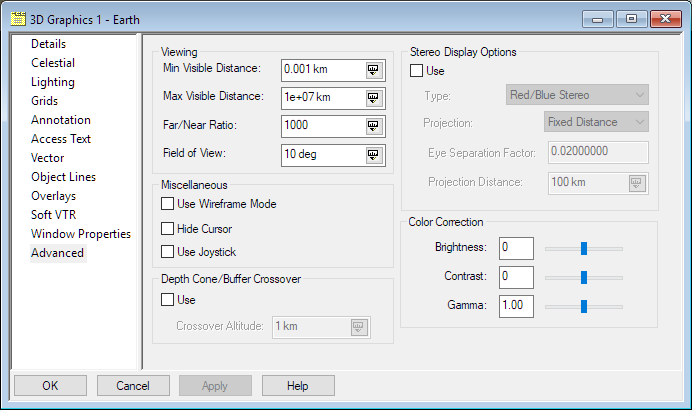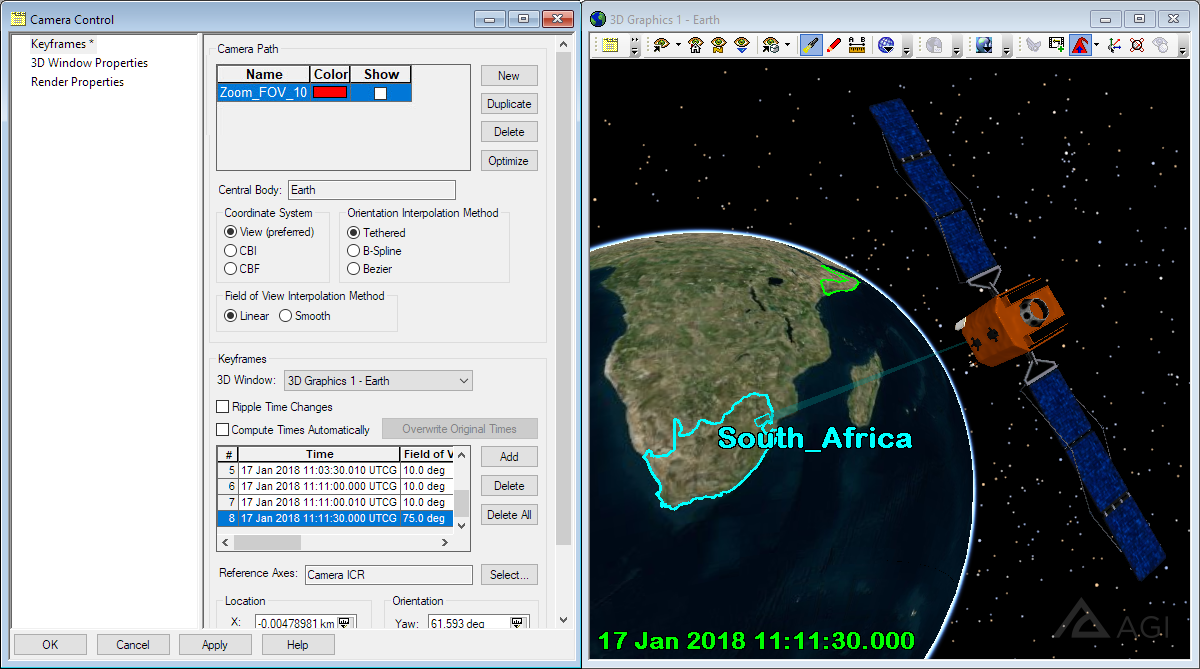The attached scenario was created using STK 11.3. You can open it in STK 11.3 or any newer version. It is comprised of one satellite orbiting at 12,000 km, a sensor, and a few area targets. You will see the sensor (camera) follow the satellite for a while and then zoom down to the Earth as it scans an area target. Upon completion, it zooms back to the satellite.
How is this possible? If the camera is always focused on the satellite, it can only move TO and AWAY from the satellite. It cannot move PAST the satellite. If you had an actual camera, you could use a zoom lens, but this isn’t an option in STK. Or is it? Open the example scenario to see how this was accomplished.
1. Load the scenario.
2. Open the Camera Control dialog box.

There is one camera path. If you wish to experiment, make a copy of the existing camera path. When adjusting or creating keyframes, make sure your camera path is disabled.
3. In the existing scenario, the first keyframe, at 10:50, shows the satellite on the left side of the screen.

4. The second keyframe, at 11:03, has the satellite on the right side of the screen, just after its sensor turns on. These two keyframes establish that the satellite is moving west to east. Placing the satellite on the right side of the screen provided a clear space for the camera to zoom.

5. The real trick to creating a clean field-of-view zoom is the use of straight lines. Two identical keyframes, separated by a very short interval (10 milliseconds usually works) will break a spline. You can see where this happens, in keyframe 3.
6. The next step was to advance the clock by 30 seconds and changed the FOV to 10 degrees. This was accomplished by using the Shift/Alt drag (up/down) and Shift/Ctrl drag (left/right), to position the camera exactly where it needed to be, and then clicking Add to create keyframe 4.


7. The clock also advanced by one time step. By double-clicking the newly created keyframe, the clock turned back a step. Then manually advancing the clock by 0.01 seconds and clicking Add again gave a new identical keyframe (5).
8. Making the field of view smaller made it look like the camera had moved closer to the Earth. It’s actually following a path behind and slightly to the left of the satellite. Advancing the clock to 11:00, repositioning the camera and repeating this process created keyframes 6 and 7.

9. Thirty seconds later, the sensor returned to the satellite by changing the field of view back to 75 degrees, repositioning the camera, and clicking Add to get keyframe 8.


